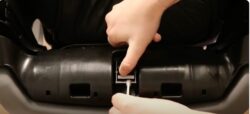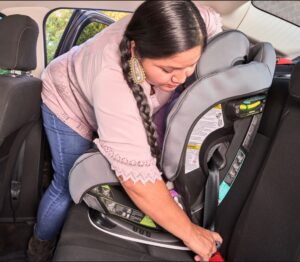A happy aspect of modern CR design is the near uniformity of the system that shortens and lengthens the harness webbing: a front-and-center adjuster strap with a nearby locking/unlocking mechanism.
This familiar system relies on the functionality of a simple lock, which is commonly called a central front adjuster, or CFA. When a CFA is undisturbed, a spring holds its toothed metal clamp onto the CR’s adjuster strap webbing, preventing the harness from moving in the direction that would allow it to lengthen, so it is locked; to unlock and lengthen the harness, simply use a finger to rotate or toggle the CFA so it no longer clamps onto the webbing.
Read More from “Reminder: Keep Debris Out of CR’s Harness Locking Mechanism”




